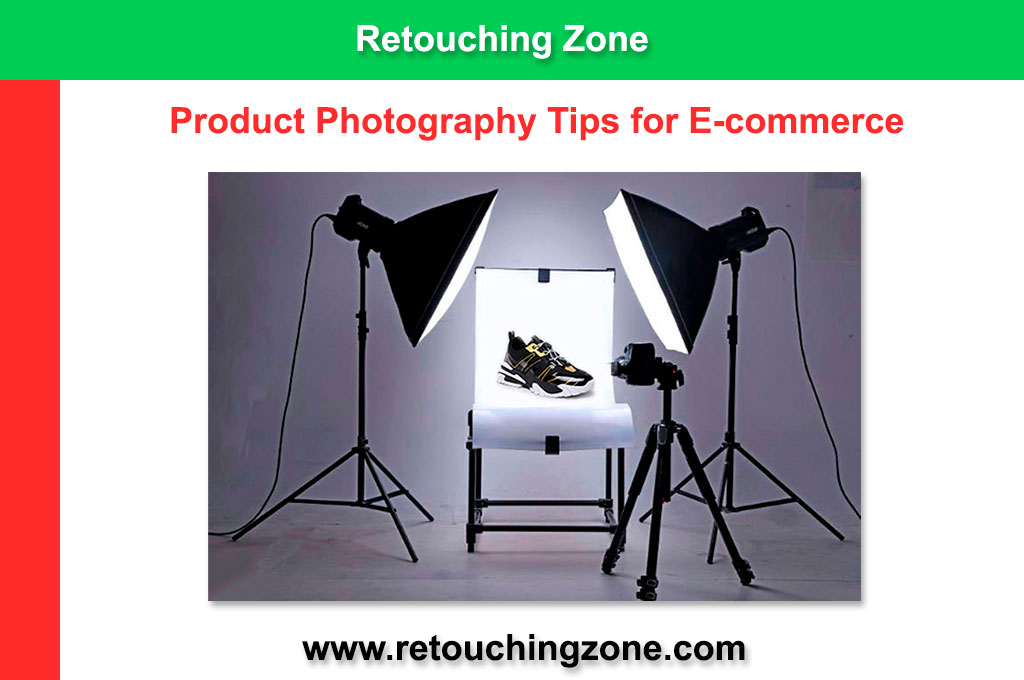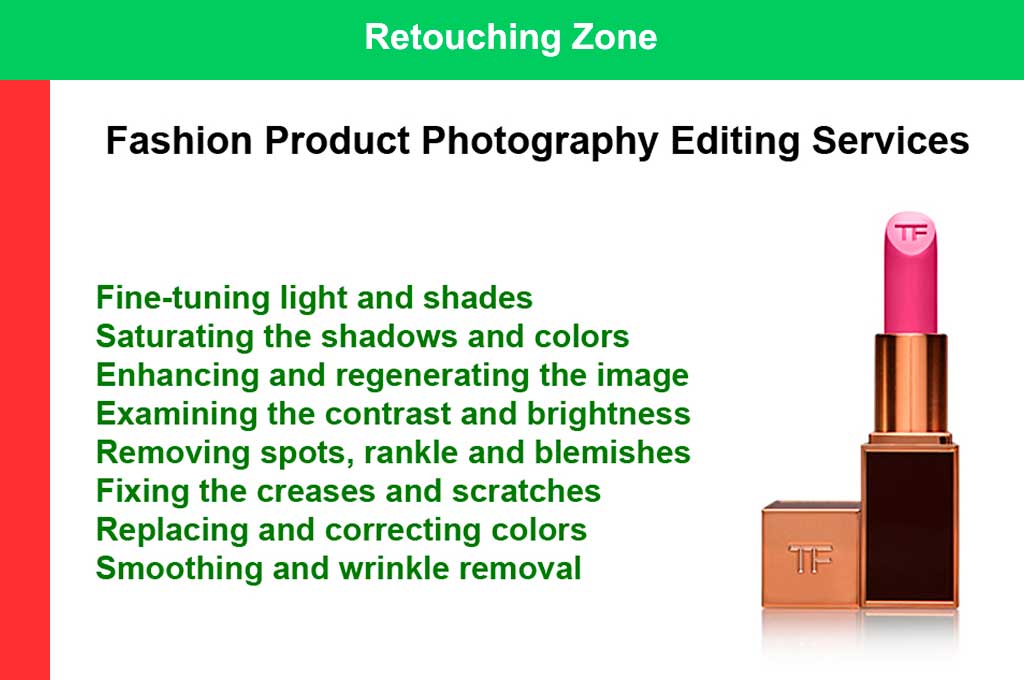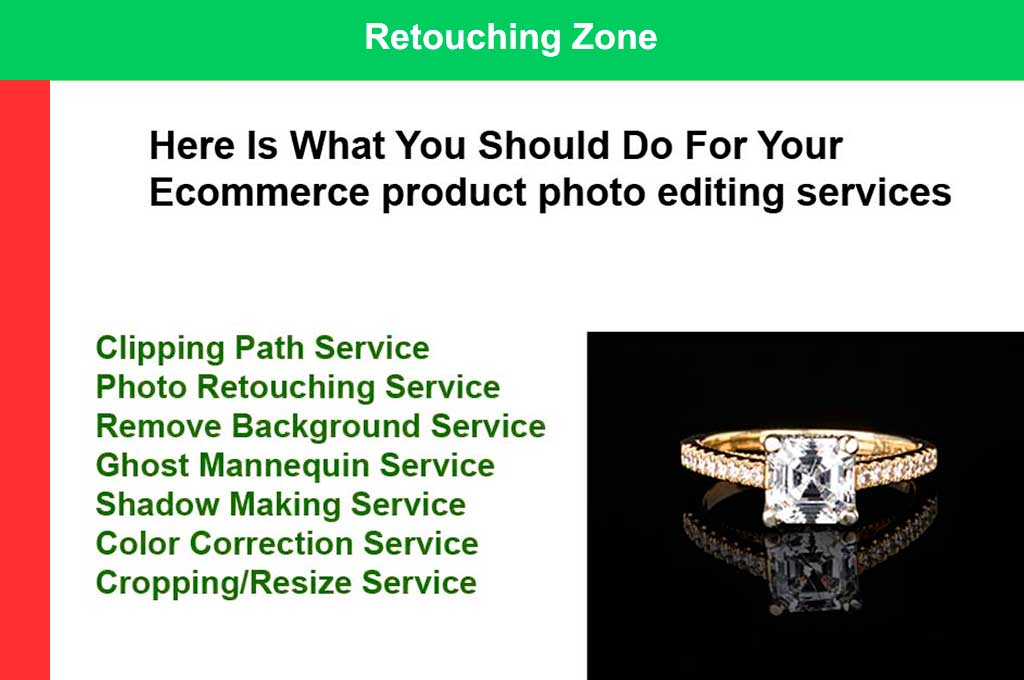In the digital age, where e-commerce is booming, a picture truly is worth a thousand words. High-quality product photos aren’t just an aesthetic choice; they’re a necessity. First impressions online come from visuals. With that said, this guide dives deep into the world of Product Photography for AliExpress, Shopify, Amazon and more offering you insights, and essential tools to elevate your e-commerce platform.
Types of Product Photography
Product photography isn’t a one-size-fits-all. Depending on the message you want to convey and the platform you’re using, you may lean towards different styles. Let’s unpack the two main types:
Single Product Shots
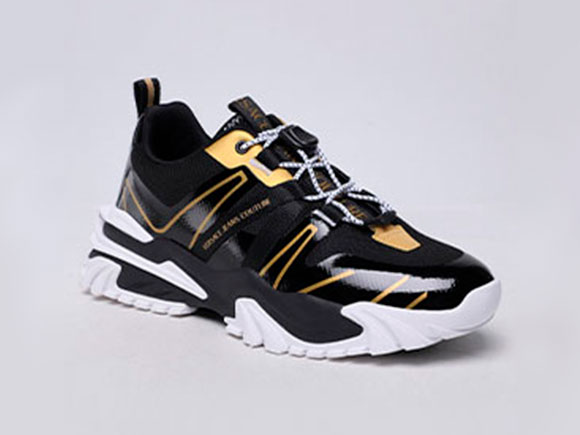
This style focuses solely on the product against a neutral or simple backdrop. The aim? Highlight the product’s features without any distractions. In the world of online shopping, clarity is king. Single product shots offer clear, unambiguous views of what’s for sale, giving customers confidence in their purchase decisions.
Lifestyle Shots
These are the photos where products come alive! Shot in real-world settings, lifestyle photos show the product in action, whether it’s a handbag slung over a shoulder in a bustling city or a coffee maker brewing the morning’s first cup. Lifestyle shots bridge the gap between product and customer. They tell a story, allowing shoppers to envision how the product fits into their lives. This emotional connection can be the difference between a passerby and a purchase.
SEO Tip: To optimize for search engines, ensure your product photos have descriptive file names and alt tags. For instance, instead of “IMG1234.jpg,” use “black-leather-handbag.jpg.” Search engines can’t “see” pictures, but they can read the descriptions associated with them.
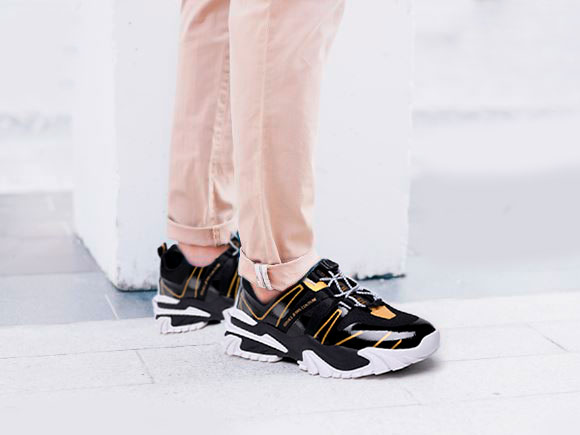
Tools to Get Started with Product Photography
Every artist needs their tools, and product photographers are no exception. So, what is it exactly you need to get started with Product Photography?
Cameras
While DSLRs provide the highest image quality and control, modern smartphones have impressive cameras suitable for beginners. The deciding factor often lies in budget and how intricate you want your setup to be.
Basic camera settings for product photography
Start with a low ISO (100-200) for noise-free images. An aperture of f/8-f/11 keeps products in focus. Adjust shutter speed based on lighting conditions, but when in doubt, a tripod can negate slower shutter speeds’ potential blur.
Lighting Equipment
Using soft boxes and diffusers help spread light evenly, preventing harsh shadows. A soft, diffused light can enhance product details and make post-processing easier. Whilst buying this equipment can be expensive, be sure to shop around to see what else is out there. Continuous LED lighting kits with built-in diffusers are a cost-effective and beginner-friendly choice. For those on a shoestring budget, a window, and a white reflector (or even white cardboard) can work wonders.
Tripods and Stabilizers
Ensuring that you have a nice stable picture can ensure that quality you desire. A blurry product photo is a lost sales opportunity. Stability ensures clarity, especially in environments with less-than-perfect lighting. Brands like Manfrotto and Joby offer reliable tripods in varying price ranges. For smartphone users, a simple grip stabilizer can significantly enhance photo quality.
Editing Software
Adobe Photoshop and Lightroom are 2 of the leading software packages for editing your product photos. Photoshop is the Swiss Army knife of image editing, ideal for detailed touch-ups. Lightroom, on the other hand, excels in color correction and batch processing. Both are invaluable tools in a product photographer’s arsenal.
If purchasing a subscription to the Adobe suites are out of your price range, then there are several free alternatives. GIMP offers a range of editing tools like Photoshop but without the price tag. It’s open-source, powerful, and suitable for those just dipping their toes into product photography for AliExpress, Shopify, Amazon and more.
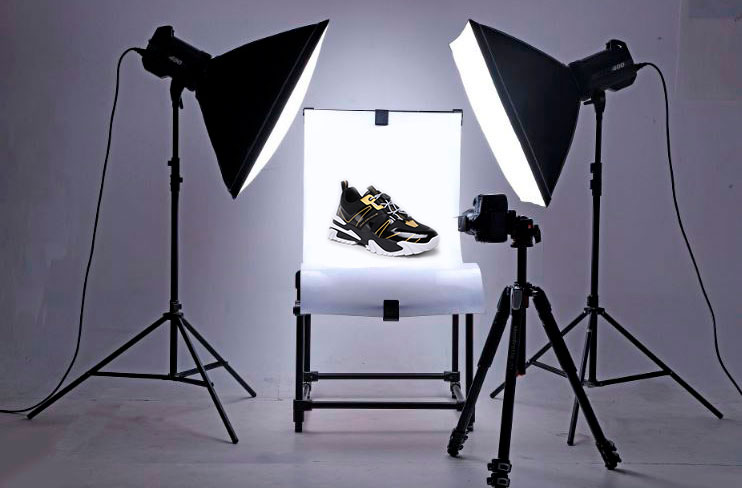
The Two Types of E-commerce Marketplace Product Photos
While we’ve touched on the broad categories of product photos, e-commerce typically revolves around two main types, white background photo and in-context photos.
White Background Photos
A crisp white background is often a requirement for marketplaces like Amazon. It ensures consistency and makes the product the absolute focal point. Use a white sweep or cyclorama to avoid shadows. Lighting from multiple directions can ensure the background is uniformly lit. Professional product photography with white background for E-commerce marketplace.
In-context Photos
It’s one thing to see a product, another to see it in action. A camping tent is just fabric until shown set up amidst mountains. Showing a product in its natural habitat, so to speak, helps customers visualize its use, fostering a deeper connection and nudging them closer to purchase.
SEO Tip: When uploading product photos to your e-commerce platform, always include descriptive metadata. This not only aids in SEO but can also enhance user experience by providing information when they hover over or click on a photo.
Product Photography Tips for AliExpress, Shopify & Amazon
Crafting the perfect product shot is part art, part science. Here are some key tips and processes that can help even beginners capture stunning photos.
Choosing the Right Background
Neutral backgrounds, often in shades of white or gray, make your product pop. They ensure there’s zero distraction, allowing the product to take center stage. Colored backgrounds can set a mood or highlight a particular feature of a product. For instance, a red background can make silver jewelry shine brighter. But use with caution! Ensure the color complements, not competes with, your product.
Lighting
Lighting can make or break a photo. Good lighting eliminates shadows, highlights key features, and provides depth to a product. Natural light is soft, diffused, and can be ideal for products like clothing or outdoor equipment. To harness it, shoot near a large window during the day. Artificial lights, like LED panels, offer more control, especially useful for detailed products like watches or tech gadgets.
Angles and Perspectives
Different customers focus on different features. Offering multiple angles caters to varied preferences and provides a holistic view. Close-ups can emphasize texture, quality, or unique features. A close-up of the stitching on a leather bag can underscore quality craftsmanship.
Post-processing
Even the best shots can benefit from a touch-up. Post-processing can correct color, sharpen details, or even remove unintended blemishes. Adobe Photoshop is the industry standard for detailed edits. For simpler adjustments, Lightroom or free options like GIMP can suffice. Get the best from Professional Product Photo Editing & Retouching Services Outsourcing Company.
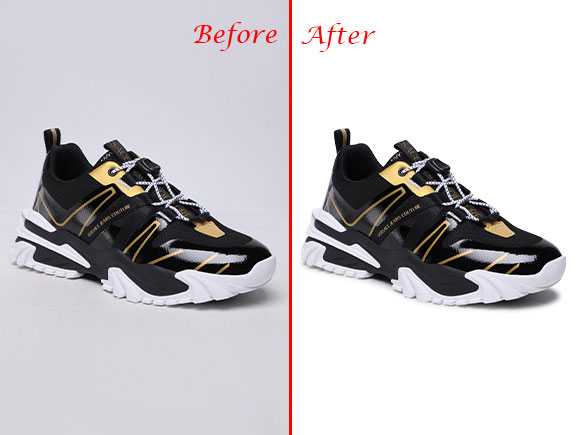
Increases Conversions with Product Photography
Ever wonder why you’re more likely to click on a product with multiple, high-quality images than one with a blurry, single photo? There’s psychology at play.
Visual Trust
High-resolution, clear photos signal professionalism and dedication. They inspire trust, making customers feel more comfortable parting with their money.
Detail-Oriented
Detailed shots, from various angles and perspectives, give customers a near-tangible shopping experience. This clarity reduces post-purchase dissonance and the likelihood of returns.
Emotion-Driven Purchases
A well-composed lifestyle shot can evoke emotions, pushing customers from the “consideration” phase to the “purchase” phase. It’s not just about seeing the product; it’s about envisioning its role in one’s life.
SEO Tip: Enhance user experience and SEO simultaneously by ensuring your website’s image load times are optimized. Use tools like Google’s PageSpeed Insights to check and get recommendations on improving load times.
When to Consider Hiring a Professional Product Photographer
While DIY can be cost-effective and a fun learning journey, there are moments when a professional touch makes all the difference.
Quality Over Quantity
As your e-commerce platform grows, maintaining a consistent level of quality across all product images becomes paramount. A professional can guarantee this consistency.
Specialized Equipment
While a basic setup suffices for many products, some items — like reflective jewelry or intricate tech devices — may demand specialized equipment for the best representation.
Time & Efficiency
Photographing products, especially in bulk, can be time-consuming. Hiring a professional frees you up to focus on other aspects of your business.
Expertise in Post-Processing
Beyond just taking photos, professionals bring expertise in editing. They can tweak images to perfection, ensuring that colors are accurate and every detail pops.
Your Options for Professionals
Once you’ve decided to hire a pro, where do you turn? Finding the best photographer for your product photos ensures the best quality. When you are looking for a professional, you can search high and low for the right person.
Local Photographers
By hiring within your community, you can meet in person to discuss needs and expectations. It also allows for easy transportation of bulkier products. Finding a local expert is not hard in the grand scheme of things. Look in local directories, community boards, and word of mouth are great places to start. Always ask for a portfolio to assess their fit for your products.
Online Freelance Platforms
You can take your search online. Platforms like Upwork and Fiverr connect businesses with freelancers worldwide. They provide ratings, reviews, and portfolios to help you make an informed decision. When finding the right freelancer, there are several things you should check.
- Always review portfolios closely.
- Start with a smaller project to assess quality, reliability, and communication before committing to larger assignments.
Photography Agencies
Some brands prefer to use a photography agency. Agencies often have a team of photographers, editors, and stylists under one roof. This can ensure a streamlined process and consistent quality across large projects. While agencies can offer premium services, they may also come with a heftier price tag. Assess if the investment aligns with your current business scale and future growth trajectory or, alternatively, look for a low-cost budget package that some photography agencies have to offer. Check it out Best eCommerce Product Photography Services Provider list for marketplace.
SEO Tip: Whether DIY or professional, always ensure that your product images are optimized for web use. High-resolution images are great for quality but can slow down website load times. Striking a balance is key for user experience and search engine rankings.
The Final Edit
The world of e-commerce is vast and fiercely competitive. In this digital realm, visual appeal isn’t just about aesthetics – it’s about trust, clarity, and customer connection. Product photography for AliExpress, Shopify, Amazon & more stands at the intersection of art and commerce, shaping first impressions and influencing purchasing decisions.
As we’ve explored, the journey into Product Photography for AliExpress, Shopify & Amazon can range from DIY setups to hiring seasoned professionals. Whether you’re Photographing a handmade craft for a local online marketplace or curating a vast inventory for an expansive e-commerce platform, the principles remain consistent: clarity, authenticity, and appeal.
Remember these key takeaways:
- Diverse Photography Styles
Use a mix of single product shots for clarity and lifestyle shots for context and emotion. This dual approach caters to both the analytical and emotional sides of potential customers. - Tools and Techniques Matter
From the right camera settings to post-processing magic, every step influences the final image. Continual learning and adapting to the latest techniques can set your products apart. - Professional Help
Recognizing when to onboard a professional can save time, elevate image quality, and potentially boost conversions. It’s an investment, but often one with significant returns. - Optimization for the Web
The best product photos are a blend of high-quality imagery and web optimization. Ensure fast load times without compromising on visual appeal.
In the vast ocean of online shopping, where consumers are bombarded with choices, standout Product Photography for AliExpress, Shopify & Amazon can be your beacon, guiding customers to your shores. It’s not just about presenting a product – it’s about crafting a visual story, one that resonates, appeals, and ultimately, sells.

